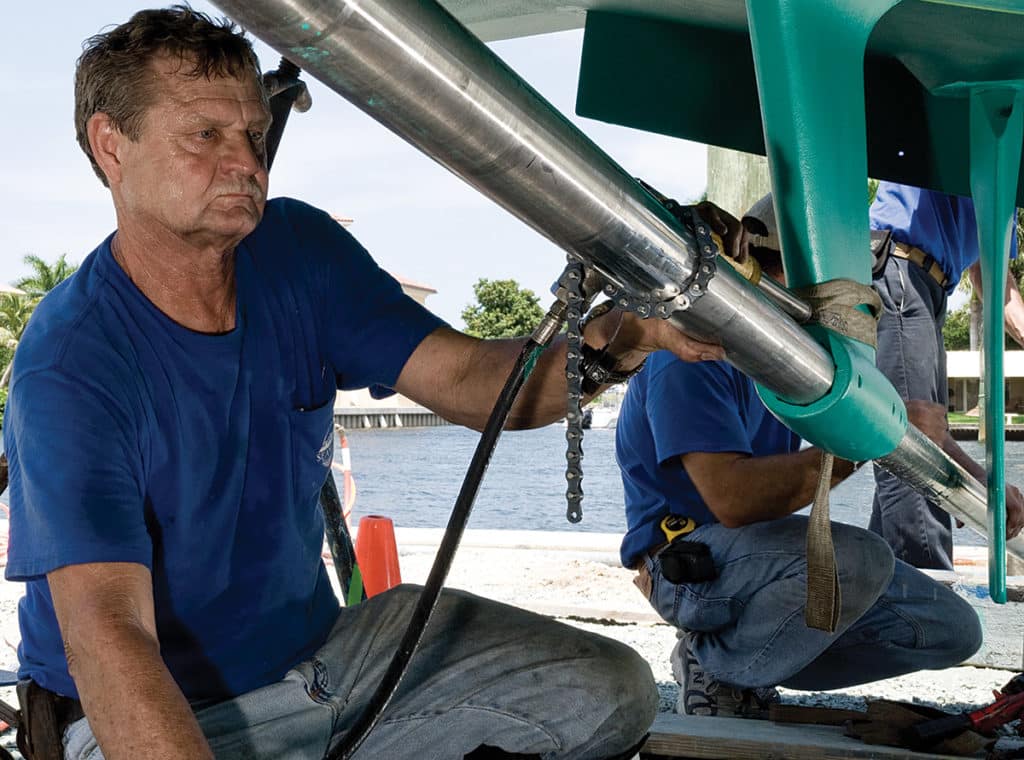
Propeller shafts are large pieces of metal that penetrate your hull while spinning many thousands of revolutions every mile you travel. What could go wrong? In the near calamity I shared in I Learned About Boating From This, a prop shaft slid from its coupling, which left me with one engine and no steering near a notorious reef. I also had a large hole below the waterline instead of a shaft inside its stuffing box, and it could have been worse. Here’s a look at a few problems to avoid.
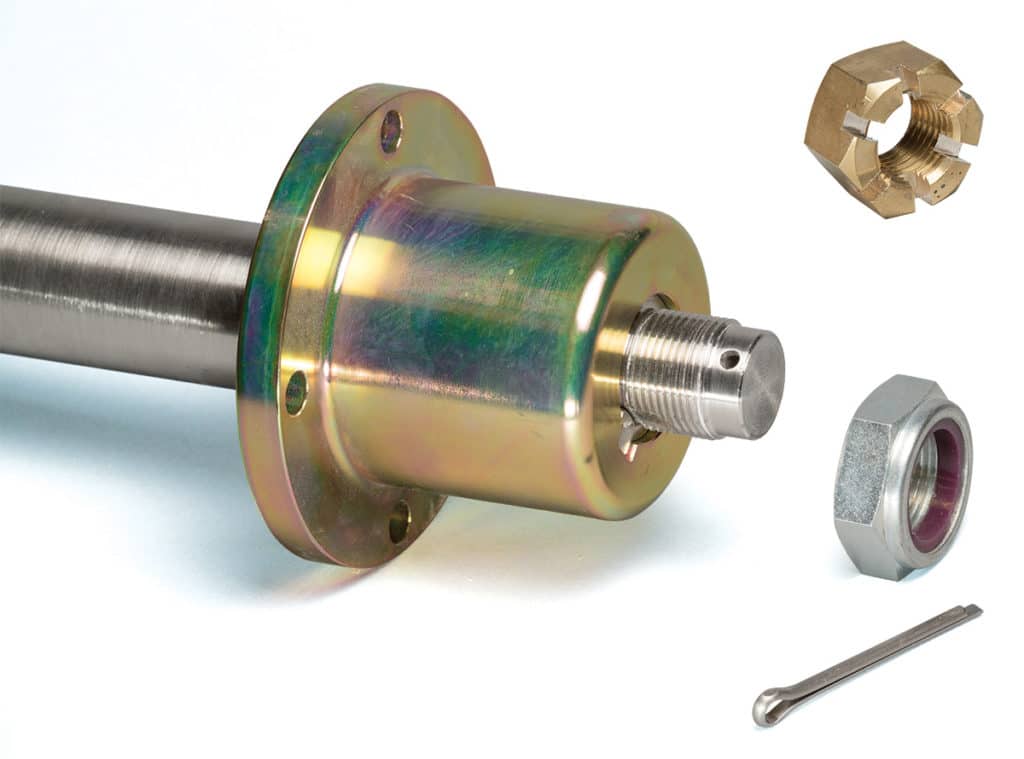
“Every coupling is machined to fit exactly onto its shaft. They’re labeled port and starboard, or one and two, as a matched set,” says Randal Hale, co-owner of Hale Propeller halepropeller.com. Castellated nuts are shaved until they draw tight with holes aligned for locking cotter pins. In my case, yard mechanics swapped labeled nuts, and when holes didn’t align, the mechanics left the cotter pins out. Vibration and shaft rotation spun the port nut off. While castellated nuts have their places, most tapered-bore shafts are assembled with nylon-insert lock nuts instead — just replace that nut every time it’s taken off the shaft. Capt. Vincent Daniello
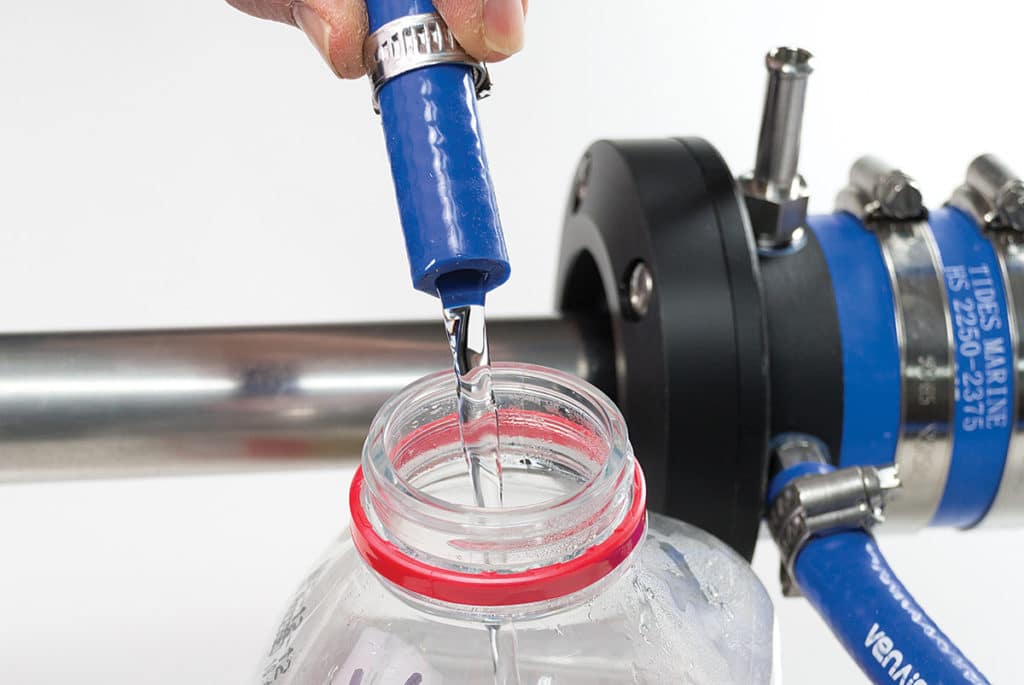
A bent or misaligned prop shaft can make lip seals and face seals leak badly. Fortunately, this shouldn’t overwhelm bilge pumps. But if cooling water from the engines is interrupted from getting injected into those seal housings, the entire assembly might fail, letting in lots of seawater. Periodically remove the hose from the shaft seal housing and start the engine. At idle, look for a gallon of water per minute coming from that hose. Also check that water enters the boat from the fitting on the shaft seal, which verifies the seal isn’t clogged. Capt. Vincent Daniello
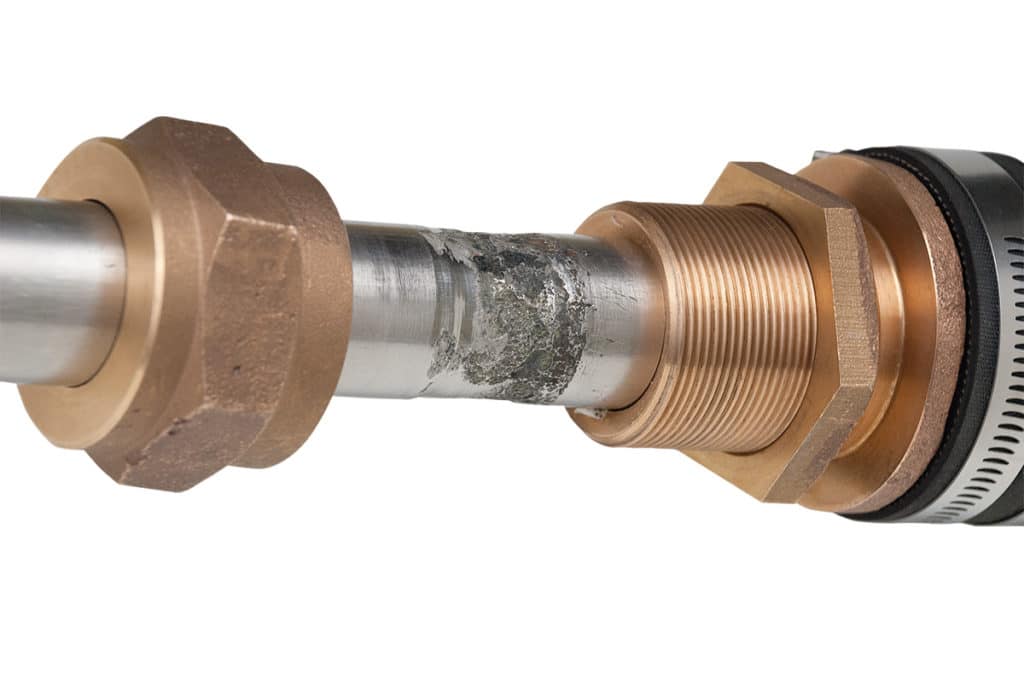
Stuffing boxes are typically cooled by weeping a bit while running. If too loose, constant flowing water can pit propeller shafts. More commonly, they’re too tight, which can score prop shafts. Look for a steady drip while underway, a drop every few seconds immediately after docking, and moistness after the boat sits overnight. Most importantly, a stuffing box should never be too hot to hold with your hand (around 120 degrees). With any type of shaft seal, watch for deteriorated rubber hoses, bellows and hose clamps that secure the seal to the shaft log and maintain bonding wires that prevent electrolysis. Capt. Vincent Daniello
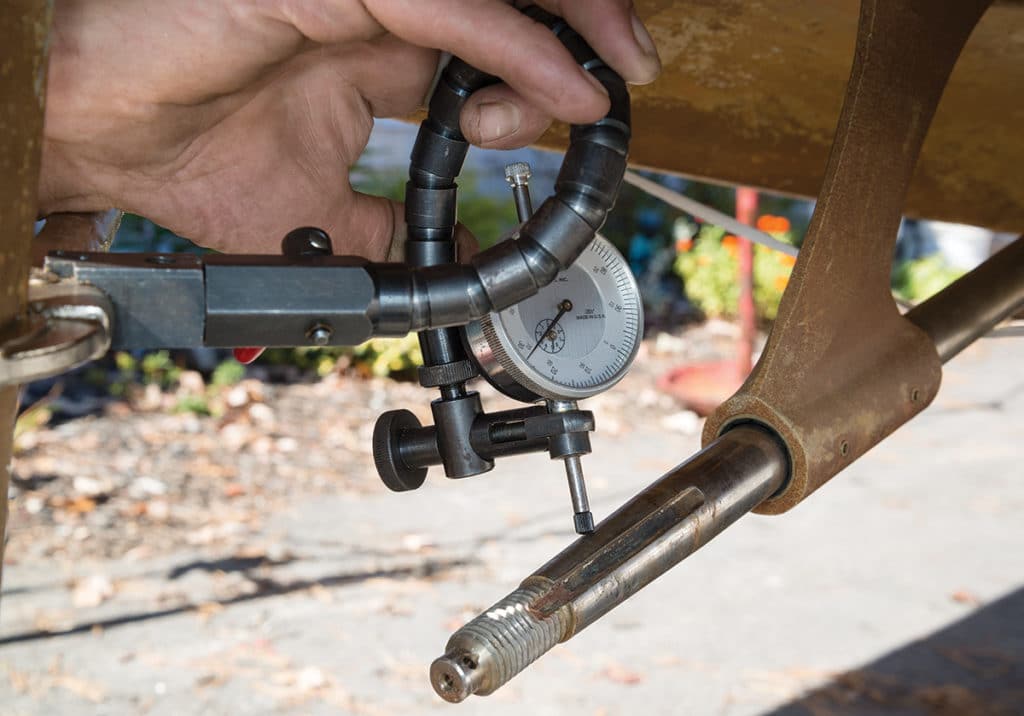
An improperly installed prop — one that binds on the shaft key instead of sliding snuggly onto the taper — can break a prop shaft in just a day. Pre-install the prop without the key, mark the hub on the shaft, and be sure the final prop installation reaches that mark. Shafts also break when they’re bent and cracked during grounding, and then left unnoticed. Check shafts with a dial indicator any time props are damaged. Capt. Vincent Daniello
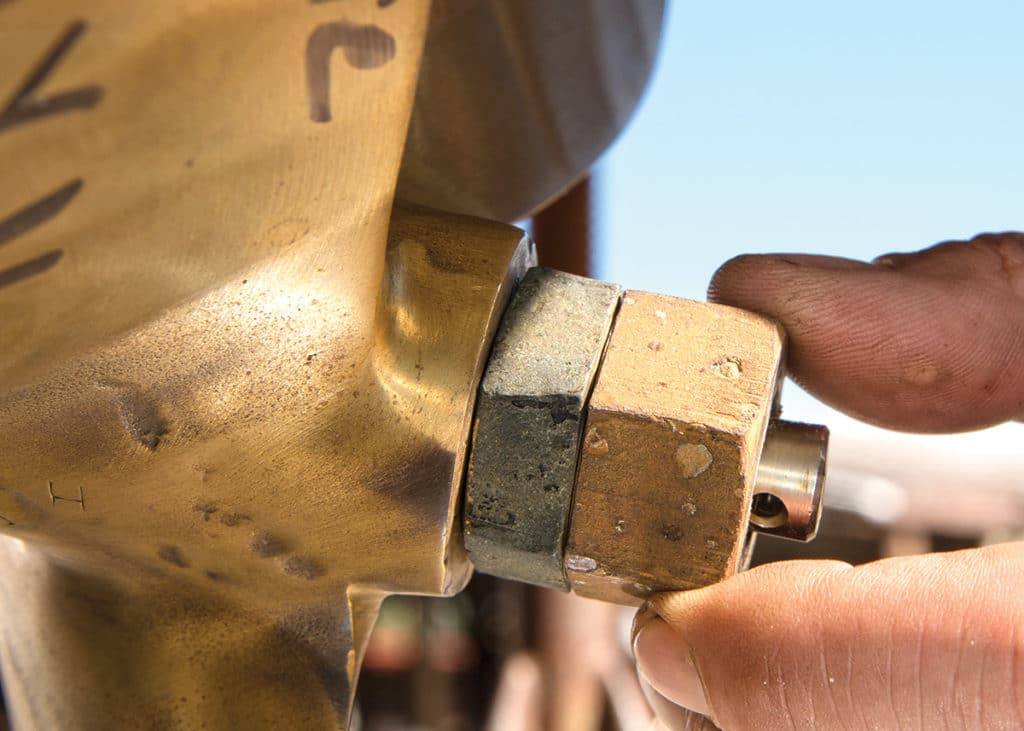
Props sometimes lose an entire blade. A splotchy pink hue to the propeller’s bronze or pitting anywhere on the prop indicates the common cause — stray current corrosion from faulty wiring. Cavitation pits propeller metal, and running with bent blades accelerates damage. Prop nuts occasionally come loose, usually when a newly installed prop doesn’t slide tightly onto its shaft until the boat runs at cruising speed. Check nuts one trip after a prop change. Also place the thinnest nut against the propeller. “When you tighten the outer nut, you’re taking pressure off the inner nut, so you want the nut that grabs the most threads farthest from the prop,” Hale says. And check those cotter pins. Each might be the one thing keeping your prop off the ocean floor, or your boat off a breaking reef. Capt. Vincent Daniello
Quick Tip: Tightening prop nuts by wedging a block of wood between the hull and one blade can misshape that blade. Instead, Hale says, hit the wrench with a heavy block of wood. “Instead of linear force, you’re using shock force, which you can overcome just by holding the prop with your hand.”









